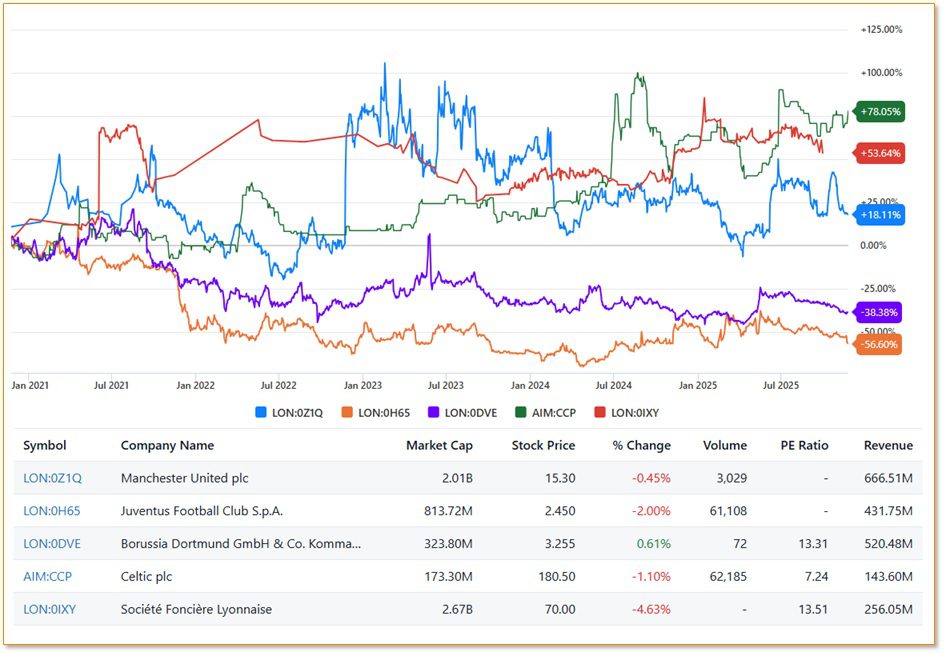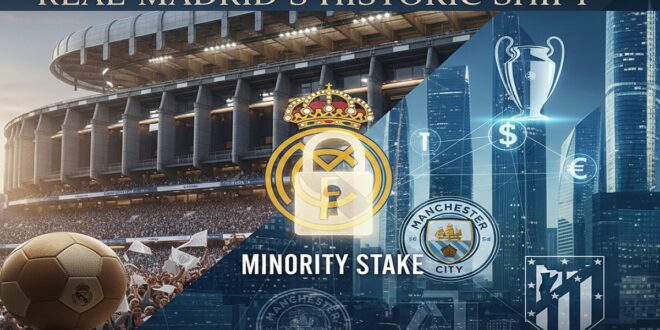Real Madrid is preparing to sell up to a 10% stake in the club to outside investors. It’s a historic shift for a club that’s been member-owned for over a century. The move mirrors what other European giants like Manchester City and Paris Saint-Germain have done, though Madrid is trying to thread a needle here, bringing in capital without giving up control.
The driver? Modern football is expensive. Really expensive.
Real Madrid’s New Investment Strategy
Real Madrid is one of the world’s most valuable football clubs. It’s owned entirely by its estimated 100,000 members, called socios. President Florentino Pérez recently announced plans to create a subsidiary company that would let investors buy a minority stake, somewhere between 5% and 10%, without touching member control.
The math is straightforward. The revamped Santiago Bernabéu stadium has cost over €1.3 billion, way above initial projections. That’s before you factor in the need to compete with rivals backed by sovereign wealth funds or billionaire owners. The money has to come from somewhere.
Pérez says this isn’t about desperation. It’s about “preserving and increasing the value” of the club. By selling a small stake, estimated at around $675 million based on a $6.75 billion club valuation, Real Madrid hopes to attract long-term partners who can contribute resources without messing with the club’s traditions.
Here’s the important part. The stake would likely be in a commercial entity managing revenue streams like sponsorships, events, and stadium operations, not the core sporting club. Investors wouldn’t have any say in sporting decisions. Members keep absolute control. That’s the pitch, anyway.
This hybrid model is designed to give Madrid financial breathing room while keeping external interests at arm’s length. It’s also different from what rival FC Barcelona did recently, selling off future revenue (“levers”) to address immediate financial problems. Madrid is framing this as long-term strategy, not crisis management.
Lessons from Other European Clubs
To understand what could happen here, it helps to look at clubs that have already gone down this road.
- Manchester City (UK)
- Manchester City was bought in 2008 by Sheikh Mansour of Abu Dhabi. The transformation was almost instant. A mid-table club became a global powerhouse, winning multiple Premier League titles and eventually the UEFA Champions League.
- From a sporting perspective, it’s been wildly successful. Financially, the club’s valuation has soared under the City Football Group multi-club model.
- But there’s a catch. Critics say state ownership distorts competition, that it creates an uneven playing field. More concretely, City Football Group is facing over 100 Premier League charges related to alleged financial fair play breaches. Those charges raise real questions about whether this model is sustainable or even fair.
- Paris Saint-Germain (France)
- PSG’s takeover by Qatar Sports Investments in 2011 followed a similar playbook. The club signed superstars like Lionel Messi and Kylian Mbappé, boosted commercial revenues, and became a global brand. It now dominates French football.
- PSG’s brand value has gone through the roof, which fits Qatar’s broader sports diplomacy strategy. But despite massive spending, the club still hasn’t won the Champions League. That raises an uncomfortable question: does investment alone guarantee sporting success? PSG has also faced UEFA scrutiny over financial fair play compliance, though it reached settlements.
- Atlético Madrid (Spain)
- This one is more relevant to what Real Madrid is considering. In 2021, Ares Management bought a significant minority stake, reportedly around 33.96%, in Atlético Madrid’s holding company. It reflected growing private equity interest in football, attracted by stable revenue from broadcasting and sponsorships.
- But things changed fast. In November 2025, the ownership structure got reshuffled. Apollo Sports Capital, the sports investment arm of Apollo Global Management, became the new majority shareholder by acquiring a 55% stake. Ares Management stayed in but dropped to just 5%. The deal is expected to close in Q1 2026.
- What started as a minority investment became majority control. That’s exactly what Real Madrid says it wants to avoid, which makes Atlético’s story a cautionary tale. Minority stakes can evolve. Control can slip away.
Evaluating the Real Madrid Investment Model
Real Madrid’s plan tries to balance opportunity against risk. Selling a minority, non-controlling stake in a commercial subsidiary is deliberate. It’s cautious.
- Opportunities:
- Capital Injection: Liquidity to offset stadium costs and fund future infrastructure projects.
- Enhanced Brand Reach: A long-term partner’s global network could unlock new marketing and sponsorship deals.
- Sustained Competitiveness: The ability to attract top talent and compete against state-backed rivals.
- Risks:
- Cultural Dilution: Even with control assurances, there’s a perception risk. Members might feel the club is losing its identity.
- Investor Agenda: Investors prioritize profit. That can clash with sporting traditions, especially when results don’t match expectations.
- Regulatory Scrutiny: More complexity, more oversight, particularly around financial fair play.
The model limits investor stakes to 10%. Members retain control over sporting matters. Madrid wants the financial benefits that Atlético got from private equity without the loss of control that just happened there. It also wants to avoid the regulatory mess that Manchester City is dealing with.
Whether that’s possible is another question.
Is It a Good Investment?
For investors, buying into Real Madrid is about prestige as much as returns. The club’s $6.75 billion valuation reflects its status as one of the most recognized brands in global football. You’re not just buying equity, you’re buying association.
The return on a minority commercial stake won’t come from flipping shares. It’s about long-term alignment and a piece of the commercial growth, especially the revenue potential from the newly renovated Santiago Bernabéu. The stadium is designed to host concerts, events, and generate income year-round, not just on match days.
For Real Madrid, the move provides liquidity to offset stadium costs and maintain competitiveness without giving up its member-owned identity. If done right, this could work for both sides. Madrid gets financial stability. Investors get symbolic entry into football’s most storied institution.
But “if done right” is doing a lot of work in that sentence. The Atlético Madrid example shows how quickly things can change. And the Manchester City charges are a reminder that bringing in outside money, even with good intentions, can lead to complications nobody anticipated.
Real Madrid is betting it can control the outcome. Whether that bet pays off depends on execution, investor selection, and a bit of luck.
FIGURE 1: Publicly Traded Football Clubs


